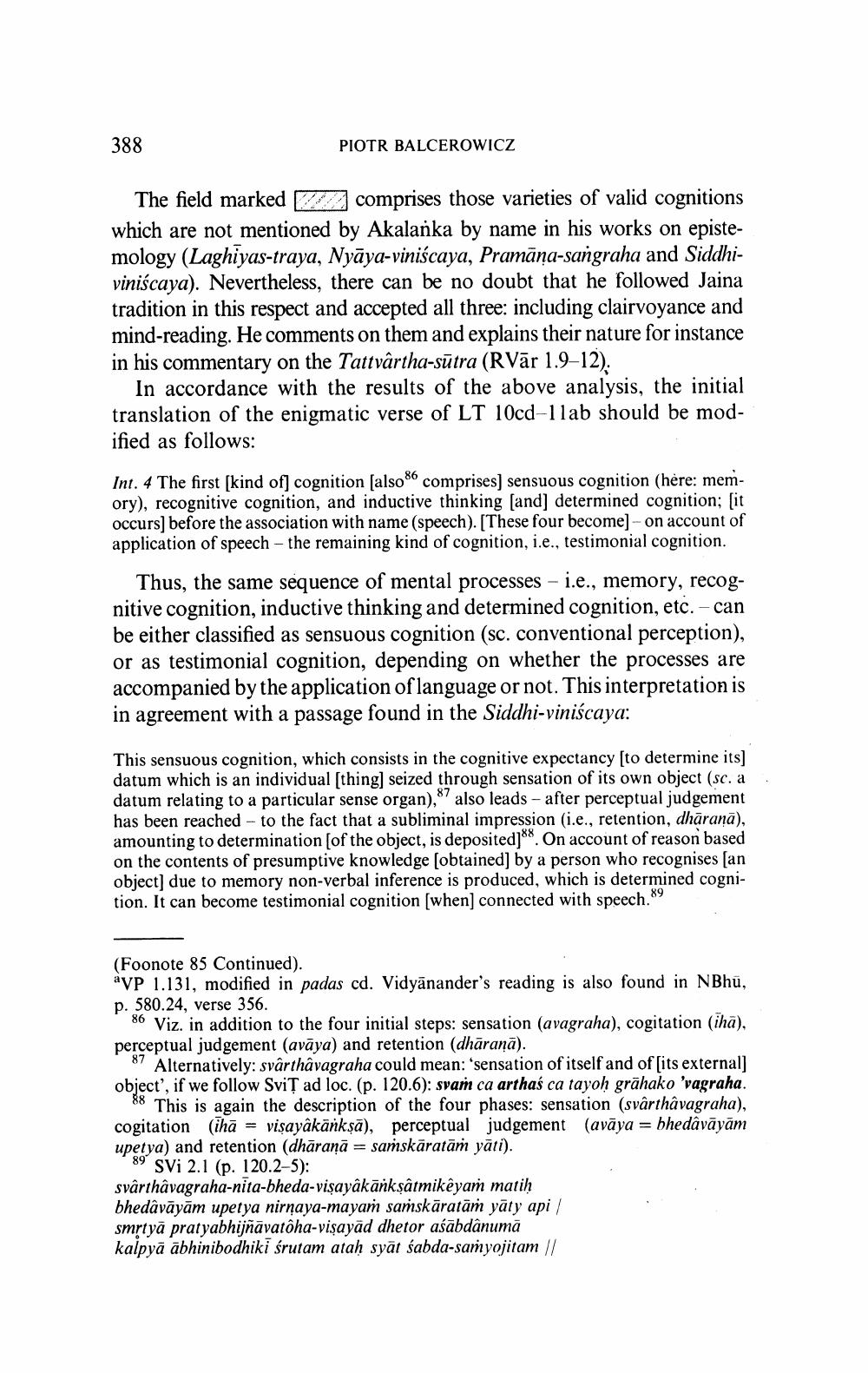________________
388
PIOTR BALCEROWICZ
The field marked a comprises those varieties of valid cognitions which are not mentioned by Akalanka by name in his works on epistemology (Laghiyas-traya, Nyāya-viniscaya, Pramāna-sangraha and Siddhiviniścaya). Nevertheless, there can be no doubt that he followed Jaina tradition in this respect and accepted all three: including clairvoyance and mind-reading. He comments on them and explains their nature for instance in his commentary on the Tattvärtha-sūtra (RVār 1.9-)
In accordance with the results of the above analysis, the initial translation of the enigmatic verse of LT 10cd-11ab should be modified as follows:
Int. 4 The first [kind of] cognition (also 86 comprises) sensuous cognition (hère: memory), recognitive cognition, and inductive thinking (and) determined cognition; (it occurs] before the association with name (speech). [These four become) - on account of application of speech - the remaining kind of cognition, i.e., testimonial cognition.
Thus, the same sequence of mental processes - i.e., memory, recognitive cognition, inductive thinking and determined cognition, etc. - can be either classified as sensuous cognition (sc. conventional perception), or as testimonial cognition, depending on whether the processes are accompanied by the application of language or not. This interpretation is in agreement with a passage found in the Siddhi-viniścaya:
This sensuous cognition, which consists in the cognitive expectancy (to determine its] datum which is an individual [thing) seized through sensation of its own object (sc. a datum relating to a particular sense organ), also leads - after perceptual judgement has been reached to the fact that a subliminal impression (i.e., retention, dhāranā), amounting to determination of the object, is deposited]88. On account of reason based on the contents of presumptive knowledge (obtained] by a person who recognises (an object) due to memory non-verbal inference is produced, which is determined cognition. It can become testimonial cognition (when) connected with speech.89
(Foonote 85 Continued). aVP 1.131, modified in padas cd. Vidyānander's reading is also found in NBhu, p. 580.24, verse 356.
86 Viz. in addition to the four initial steps: sensation (avagraha), cogitation (iha), perceptual judgement (avāya) and retention (dhāranā).
87 Alternatively: svârthâvagraha could mean: 'sensation of itself and of [its external] object', if we follow Svi? ad loc. (p. 120.6): svam ca arthaś ca tayoh grähako 'vagraha.
88 This is again the description of the four phases: sensation (svârthâvagraha), cogitation (inā = visayâkānkşā), perceptual judgement (avāya = bhedāvāyām upetya) and retention (dhāraņā= sarskāratām yāti).
89 Svi 2.1 (p. 120.2-5): svârthâvagraha-nita-bheda-visayâkānkşâtmikêyam matih bhedāvāyām upetya nirnaya-mayam samskāratām yāty api/ smrtyā pratyabhijñāvatôha-visayād dhetor aśābdânumā kalpyā ābhinibodhiki śrutam atah syāt sabda-samyojitam //




